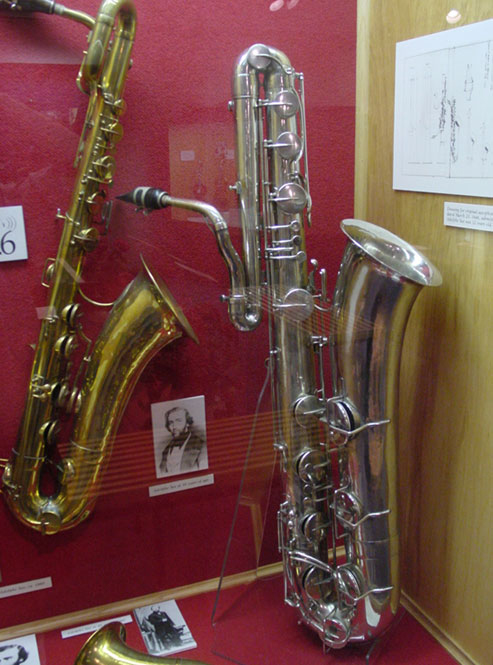

Multiple albums were released by a wide range of labels including Trost, Not Two, Nero's Neptune, Clean Feed, Omlott, Smalltown Superjazz, and his own BRO label. Brötzmann put out three new sets in 2008, The Fat Is Gone, Born Broke, and The Brain of the Dog in Section, all on Atavistic Records.īrötzmann's touring regimen and release schedule (of new and reissued material) were tireless and prolific.
#PETER BROTZMANN FOR ADOLPHE SAX FREE#
In 2007, The Complete Machine Gun Sessions was released, reissuing the seminal free jazz outing Machine Gun recorded by the Peter Brötzmann Octet in 1968, and featuring two previously unreleased alternate takes and a live track. With Bergman's percussive intensity, the record becomes one of the more unusual and compelling free jazz artifacts of the era. While one might expect Brötzmann's incendiary nature to overwhelm the blither Braxton, he instead manages to parry and complement effectively. The strength of his personality is matched by his adaptability as evidence, hear Eight by Three, his 1997 recording with pianist Borah Bergman and multi-reedist Anthony Braxton. By the late '90s, one would be hard-pressed to name a prominent free jazz musician with whom Brötzmann had not played. His circle of associates would continue to widen in 1986 he would play (with drummer Ronald Shannon Jackson, guitarist Sonny Sharrock, and electric bassist/producer Bill Laswell) in Last Exit, a metal/free jazz group that enjoyed brief success. In the '70s, Brötzmann would play and record with pianist Fred van Hove, drummer Han Bennink, trumpeter Don Cherry, and trombonist Albert Mangelsdorff, among others. In 1969 Brötzmann helped form FMP, a long-lived free jazz label and presenter that issues recordings and sponsors live performances. The next year he played with Michael Mantler and Carla Bley's band and became associated with Alexander Schlippenbach's Globe Unity Orchestra. He began playing free jazz around 1964 in 1965, he played in a group with the virtuoso bassist Peter Kowald and the Swedish drummer Sven-Åke Johansson. In the early '60s, he became involved with the avant-garde Fluxus movement. A self-taught saxophonist, he began playing with Dixieland bands in 1959. Though his later music often contains more space by contrast, his intensity and force are seldom far behind, as evidenced by 2012's Peter Brötzmann Solo + Trio Roma captured in 2011 with bassist Massimo Pupillo and drummer Paal Nilssen-Love.īrötzmann was first a visual artist, attending the Art Academy of Wuppertal. His continued relevance with generations of players from his bandmates in Last Exit, to Evan Parker, Jim O'Rourke, Keiji Haino, Han Bennink, and Heather Leigh, is rooted in the constant pushing of his own boundaries rather than a "refinement" of his art. Indeed, Brötzmann's obsession often serves as a pivot upon which an ensemble turns, making him a consummate team player, in addition to being an affecting soloist.

While there's no lack of spontaneity in his music, Brötzmann's concern with motivic and melodic reiteration gives his playing a palpable sense of direction. Brötzmann's playing possesses a surety of tone and a melodic center characteristic of a focused musical conception. His catalog reads like a vanguard's who's-who in free jazz and experimental rock.

While recordings of his various trios exist as early as 1964, it is the historic 1967 album For Adolphe Sax with bassist Peter Kowald and drummer Sven-Åke Johansson, on his own BRO label, as well as his octet date Machine Gun from 1968 and his membership in the Globe Unity Orchestra that established his bona fides on the scene. He is the rare Albert Ayler-influenced saxophonist capable of producing improvised lines of depth and sensitivity while informing them with enough raw power to make a lesser saxophonist wilt. He has played on literally hundreds of recordings - many of them live - from solo concerts to large ensemble dates and virtually every configuration in between. His rough tone and emotively ferocious method of attack on saxophones, clarinet, and taragato are among the most recognizable in jazz. Peter Brötzmann is one of the most prolific and enduring of the free jazz musicians to emerge from the European avant music scene of the 1960s.


 0 kommentar(er)
0 kommentar(er)
